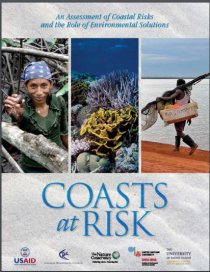Coasts at Risk: An Assessment of Coastal Risks and the Role of Environmental Solutions
The report finds a significant link between environmental degradation and disaster vulnerability, meaning not just a community’s risk of being hit, but the ability to resist and recover from natural disasters. Globally, 23% of the population lives within 100 km of a coast, and that is predicted to increase to 50% by 2030. Governments and aid agencies can’t change storm paths or block tsunamis. But there are many ways to reduce the social and financial impacts of those hazards. This report makes clear that attention to natural capital — improving coral reefs and mangroves that buffer shores and improving fisheries to enhance food security — could also go a long way toward reducing the human cost of coastal hazards.

